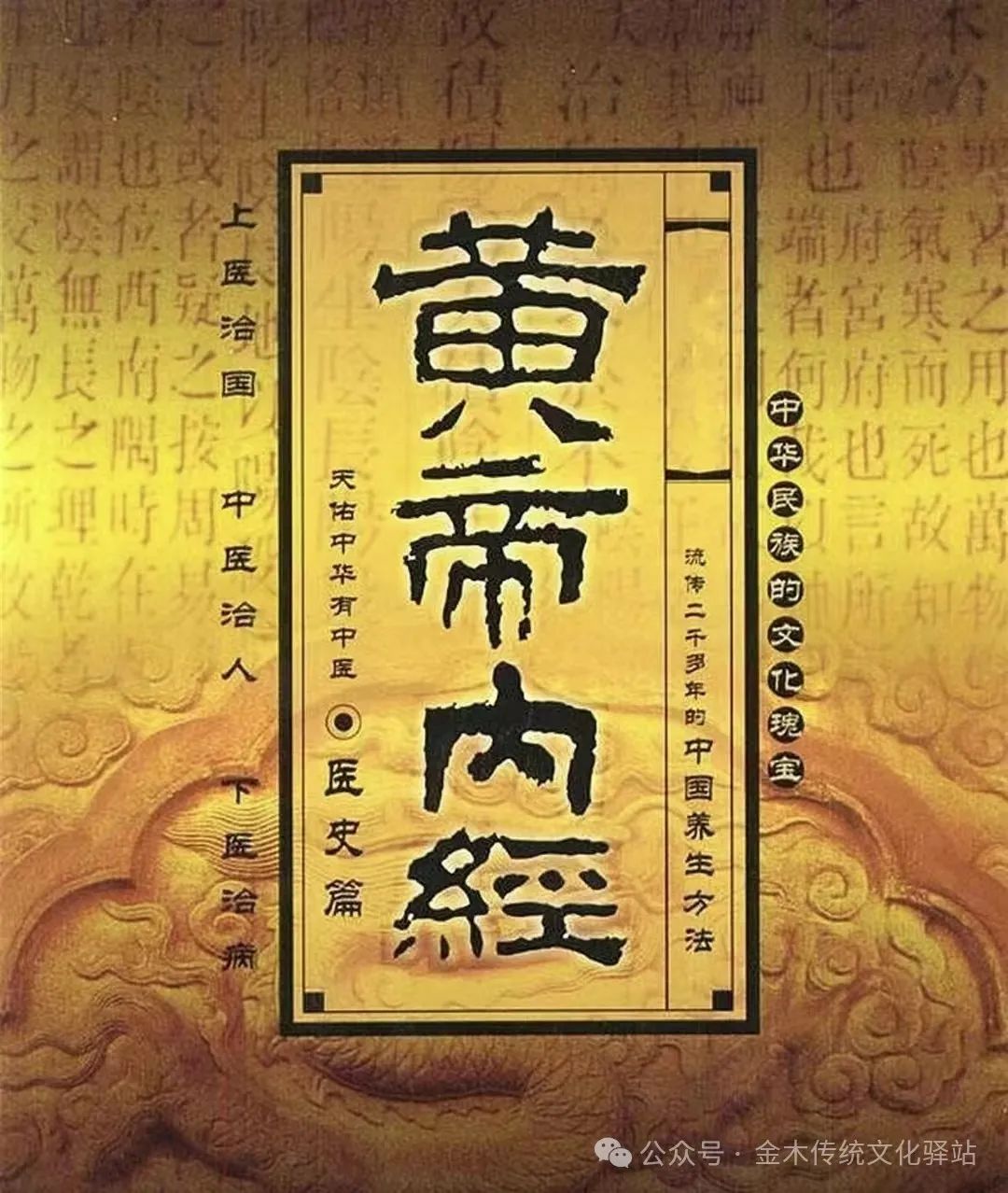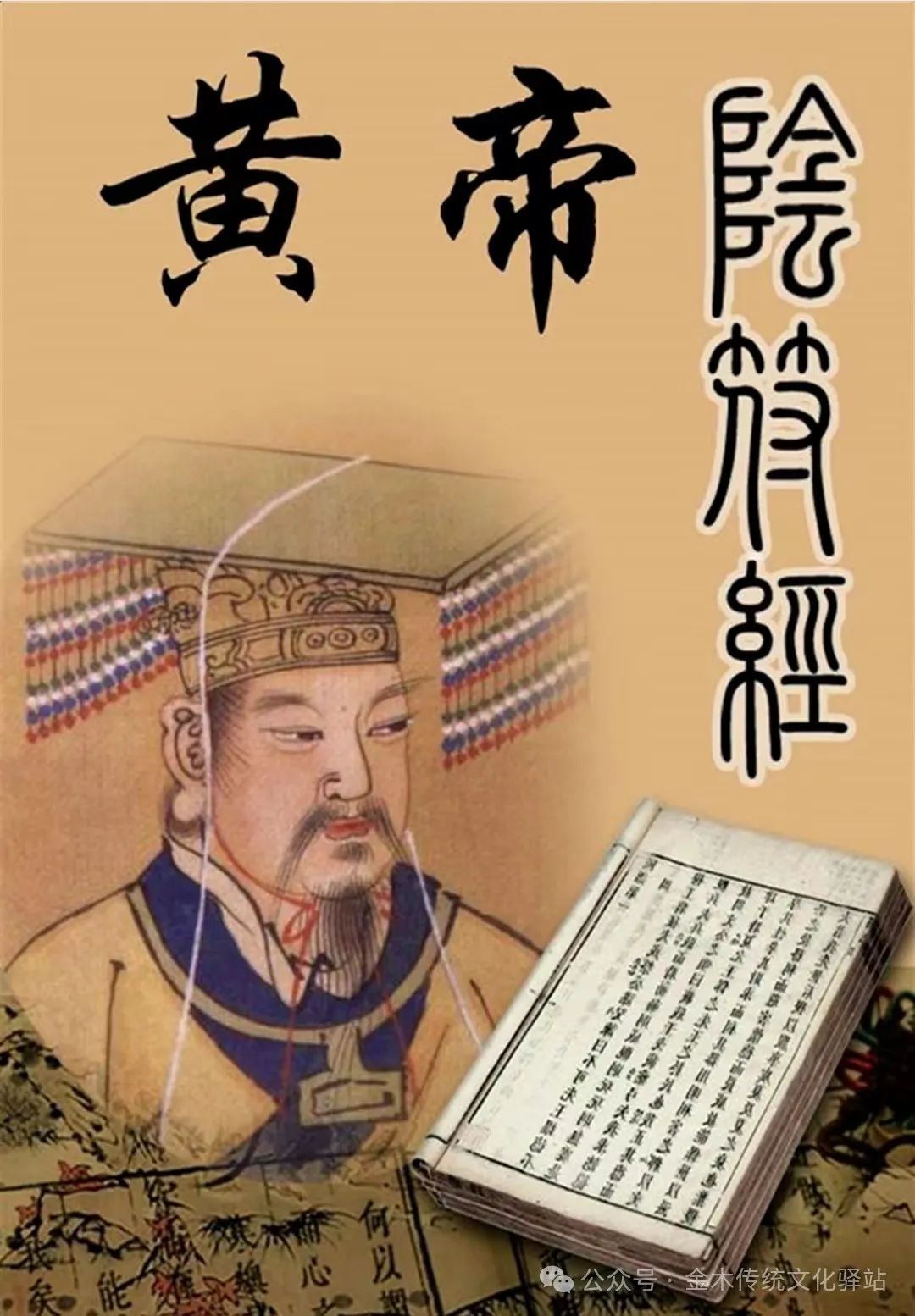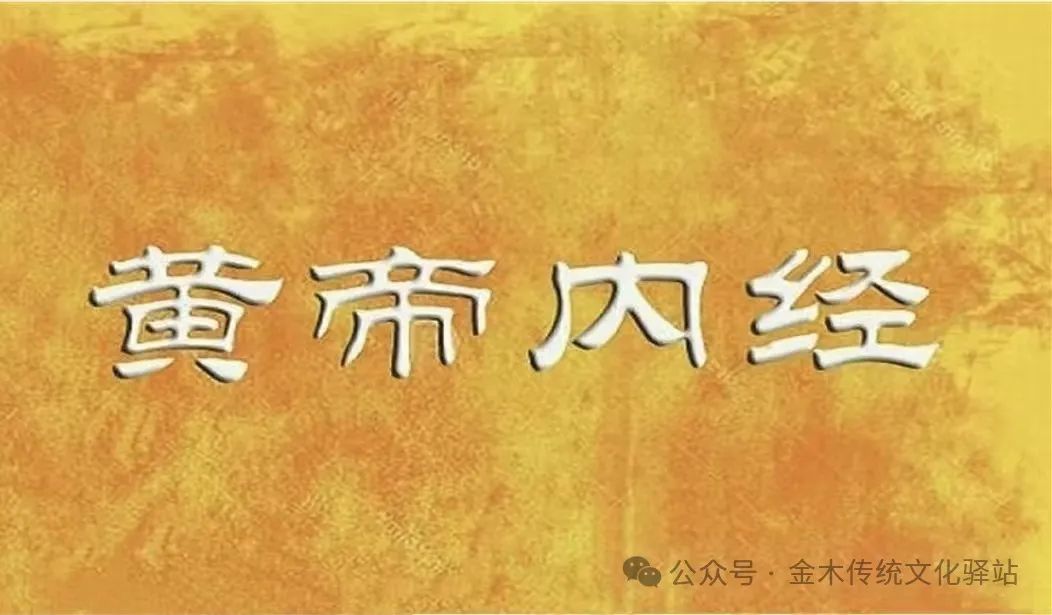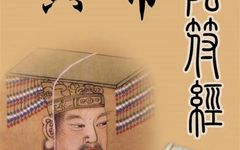
I. Basic Theories 1. The center of the organic whole is: the Five Organs (Wu Zang)2. The ruler of the organic whole is: the Heart (Xin)3. The time of Yang within Yang is: morning4. The time of Yin within Yin is: the first half of the night5. The time of Yin within Yang is: afternoon6. The time of Yang within Yin is: morning7. The explanation of Yin and Yang being mutually rooted is: Yin is internal, Yang is preserved8. The explanation of opposition and restriction is: the extreme of movement is subdued by stillness9. The explanation of Yin and Yang being mutually rooted is: seeking Yang within Yin10. The explanation of transformation between Yin and Yang is: extreme heat produces cold11. The organ referred to as “Yang within Yang” is: the Heart (Xin)12. The organ referred to as “Yin within Yang” is: the Liver (Gan)13. The organ referred to as “Yin within Yin” is: the Kidney (Shen)14. The organ referred to as “Yang within Yin” is: the Lung (Fei)15. The syndrome caused by excessive Yin is: Excess Cold Syndrome (Shi Han Zheng)16. The syndrome caused by deficient Yin is: Deficiency Heat Syndrome (Xu Re Zheng)17. The syndrome caused by excessive Yang is: Excess Heat Syndrome (Shi Re Zheng)18. The syndrome caused by deficient Yang is: Deficiency Cold Syndrome (Xu Han Zheng)19. The treatment method determined by the mutual rooting of Yin and Yang is: seeking Yin within Yang20. The treatment method suitable for deficient Yang is: treating Yang for Yin diseases21. The treatment method determined by the opposition and restriction of Yin and Yang is: treating heat with cold22. The treatment method suitable for excessive Yang is: treating heat with cold23. The characteristic of “Wood” is: bending and straightening24. The characteristic of “Water” is: moistening and descending25. The sound belonging to “Metal” is: Shang sound26. The sound belonging to “Water” is: Yu sound27. The action that “Wood” cannot overcome is: Metal28. The action that “Water” can overcome is: Fire29. The child action of Metal is: Water30. The mother action of Fire is: Wood31. The child of “Wood” that it cannot overcome is: Water32. The mother of “Wood” that it can overcome is: Fire33. The transmission of Liver disease to Spleen is: mutual promotion34. The transmission of Liver disease to Heart is: mother disease affecting child35. The transmission of Lung disease to Kidney is: mother disease affecting child36. The mutual insult of Wood and Fire to Metal is: mutual insult37. “Seeing Liver disease, knowing Liver transmits to Spleen” belongs to: mutual promotion38. “Water Qi invading the Heart” belongs to: mutual promotion39. Joy promotes: Sadness40. Fear promotes: Joy41. Belonging to “Fire” is: Joy42. Belonging to “Metal” is: Sadness43. Belonging to “Water” is: Ear44. Belonging to “Earth” is: Mouth45. Belonging to “Water” is: Salty46. Belonging to “Wood” is: Sour47. Belonging to “Water” is: Black48. Belonging to “Metal” is: White49. “Ruler’s organ” refers to: Heart50. “General’s organ” refers to: Liver51. “Source of life” refers to: Heart52. “Source of cessation” refers to: Liver53. “Root of Qi” refers to: Kidney54. “Master of Qi” refers to: Lung55. “Source of congenital” refers to: Kidney56. “Source of acquired” refers to: Spleen57. “Source of vitality” refers to: Spleen58. “Pivot of Qi” refers to: Lung59. “Source of phlegm” refers to: Spleen60. “Container of phlegm” refers to: Lung61. The master of blood circulation is: Heart62. The master of blood regulation is: Spleen63. The master of all meridians is: Lung64. The master of blood production is: Spleen65. The one regulating the water pathways is: Lung66. The one transforming water and fluids is: Spleen67. The master of blood circulation is: Heart68. The master of blood storage is: Liver69. The one controlling respiration is: Spleen70. The master of Qi intake is: Kidney71. The master of regulation is: Liver72. The master of closure and storage is: Kidney73. The source of Qi and blood transformation is: Spleen74. The great master of the Five Organs and Six Bowels is: Heart75. The master of blood is: Heart76. The master of Qi is: Spleen77. The one storing the spirit is: Heart78. The one regulating emotions is: Liver79. The master of regulation is: Lung80. The master of ascending clarity is: Spleen81. The one most closely related to the metabolism of water and fluids is: Kidney82. The one most closely related to blood circulation is: Heart83. The function of the Heart is: circulating blood84. The function of the Liver is: storing blood85. The function of the Kidney is: receiving Qi86. The function of the Lung is: governing Qi87. The organ referred to as the “stiff organ” is: Liver88. The organ referred to as the “delicate organ” is: Lung89. “Central organ” refers to: Gallbladder90. “Receiving organ” refers to: Small Intestine91. “Master of fluids” is: Large Intestine92. “Master of liquids” is: Small Intestine93. The master of intake is: Stomach94. The master of transformation is: Small Intestine95. “Sea of food and grains” refers to: Stomach96. “Official of the capital” refers to: Bladder97. The relationship of “essence and blood sharing the same source” is: Liver and Kidney98. The pivot of Qi’s rise and fall is: Spleen and Stomach99. The relationship of “water and fire being in harmony” is: Heart and Kidney100. The one closely related to the regulation of Qi is: Liver and Lung

1. “Sea of marrow” refers to: Brain2. “Blood mansion” refers to: Pulse3. The Lung in the body is: Skin4. The Liver in the body is: Tendons5. The Kidney in the body is: Bones6. The Heart in the body is: Pulse7. The Heart in emotion is: Joy8. The Kidney in emotion is: Fear9. The Liver in emotion is: Anger10. The Spleen in emotion is: Thoughtfulness11. The Spleen’s manifestation is: Lips12. The Kidney’s manifestation is: Hair13. The Heart’s manifestation is: Face14. The Liver’s manifestation is: Nails15. The Liver in orifice is: Eyes16. The Kidney in orifice is: Ears17. Related to growth and development is: Promoting action18. Related to blood circulation is: Promoting action19. The transformation of essence and blood relies on Qi’s: Qi transformation action20. The movement of fluids relies on Qi’s: Promoting action21. The Qi received by the Kidney is: Clear Qi22. The Qi circulating in the San Jiao is: Yuan Qi23. The Qi within the pulse is: Ying Qi24. The Qi outside the pulse is: Wei Qi25. Zong Qi is: Qi accumulated in the chest26. Wei Qi is: Qi circulating outside the pulse27. The Qi generated by the Spleen and Lung is: Zong Qi28. The Qi disseminated by the Lung is: Wei Qi29. The Qi that generates blood is: Ying Qi30. The Qi that promotes heartbeats is: Zong Qi31. The Qi that penetrates the heart pulse is: Zong Qi32. The Qi that promotes growth and development is: Yuan Qi33. The theoretical basis for pairing Qi tonifying herbs when treating blood deficiency is: Qi can generate blood34. The theoretical basis for “Qi follows blood” is: Blood can carry Qi35. The theoretical basis for “those who take blood will not sweat” is: Fluids and blood share the same source36. The theoretical basis for “after vomiting and purging, there will be no complete Qi” is: Fluids can carry Qi37. The meridian distributed along the inner side of the lower limb is: Foot Shao Yin Kidney Meridian (Zu Shao Yin Shen Jing)38. The meridian distributed along the outer side of the lower limb is: Foot Tai Yang Bladder Meridian (Zu Tai Yang Pang Guang Jing)39. The meridian distributed along the inner front side of the lower limb is: Foot Tai Yin Spleen Meridian (Zu Tai Yin Pi Jing)40. The meridian distributed along the inner midline of the lower limb is: Foot Jue Yin Liver Meridian (Zu Jue Yin Gan Jing)41. The pathway of the Foot Three Yang Meridians is: from head to foot42. The pathway of the Hand Three Yang Meridians is: from hand to head43. The meridian circulating along the inner back side of the upper limb is: Hand Shao Yin Heart Meridian (Shou Shao Yin Xin Jing)44. The meridian circulating along the inner front side of the upper limb is: Hand Tai Yin Lung Meridian (Shou Tai Yin Fei Jing)45. The meridian circulating along the outer back side of the lower limb is: Foot Tai Yang Bladder Meridian (Zu Tai Yang Pang Guang Jing)46. The meridian circulating along the inner midline of the lower limb is: Foot Jue Yin Liver Meridian (Zu Jue Yin Gan Jing)47. The meridian originating from the middle Jiao is: Hand Tai Yin Lung Meridian (Shou Tai Yin Fei Jing)48. The meridian originating from the outer canthus of the eye is: Foot Shao Yang Gallbladder Meridian (Zu Shao Yang Dan Jing)49. The physiological function of the collaterals is: strengthening the connection between the two meridians in the limbs50. The physiological function of the meridian collaterals is: strengthening the connection between the two meridians in the body51. The function of the Chong Meridian is: regulating the Qi and blood of the twelve meridians52. The function of the Qiao Meridian is: dividing and governing the Yin and Yang of the body53. The disease of the Tai Yang Meridian can present as: headache and neck pain54. The disease of the Jue Yin Meridian can present as: vertex pain55. The “sea of twelve meridians” refers to: Chong Meridian56. The one restraining the longitudinal circulation of the meridians is: Dai Meridian57. The “sea of Yang meridians” is: Du Meridian58. The “sea of Yin meridians” is: Ren Meridian59. The evil Qi most likely to cause “movement bi” is: Wind evil60. The evil Qi most likely to cause “zhua bi” is: Damp evil61. The pathogenic characteristics of fire heat evil can present as: agitation and restlessness62. The pathogenic characteristics of damp evil can present as: heaviness in the limbs, chest tightness, nausea63. The one with a nature of stagnation is: Cold evil64. The one with a nature of stickiness is: Damp evil65. The evil Qi that often first harms the Spleen is: Damp evil66. The evil Qi most likely to harm the Lung is: Dry evil67. The pathogenic characteristics of Cold evil are: easily harming Yang Qi68. The nature and pathogenic characteristics of Dry evil are: easily harming the Lung69. The nature and pathogenic characteristics of Wind evil are: opening and dispersing70. The nature and pathogenic characteristics of Cold evil are: stagnation71. The evil Qi that has a nature of contraction is: Cold evil72. The evil Qi that has a nature of rising and dispersing is: Summer heat evil73. The evil Qi that easily invades Yin positions is: Damp evil74. The evil Qi that easily invades Yang positions is: Wind evil75. When emotions cause illness, excessive joy leads to: Qi relaxation76. When emotions cause illness, excessive sadness leads to: Qi depletion77. Excessive sadness can lead to: mental fatigue, shortness of breath, and weakness78. Excessive joy can lead to: inability to concentrate, and in severe cases, loss of consciousness and madness79. According to the “Su Wen: Theory of Vital Qi” and “Su Wen: Generation of the Five Organs”, excessive salty food can lead to: Kidney excess affecting the Heart80. According to the “Su Wen: Theory of Vital Qi” and “Su Wen: Generation of the Five Organs”, excessive spicy food can lead to: Lung excess affecting the Liver81. Factors that can damage the Heart and Spleen are: excessive mental labor82. Factors that can damage the Spleen and Stomach are: overeating83. An important condition for the occurrence of disease is: evil Qi84. The internal factor for the occurrence of disease is: deficiency of righteous Qi85. The syndrome of deficiency of righteous Qi and excess of evil Qi is: mixed deficiency and excess syndrome86. The syndrome of excess of evil Qi and no decline of righteous Qi is: excess syndrome87. The syndrome of deficiency of righteous Qi and no evil Qi is: deficiency syndrome88. The syndrome formed by the accumulation of real evil, blocking the meridians, and preventing Qi and blood from expressing outward is: real false deficiency syndrome89. The syndrome of excessive Yin blocking Yang is: true cold false heat syndrome90. The syndrome of excessive Yang blocking Yin is: true heat false cold syndrome91. When Yang is deficient, cold appears: deficiency cold syndrome92. When Yang is excessive, heat appears: excess heat syndrome93. When Yin is deficient, heat can cause: deficiency heat syndrome94. When Yin is excessive, cold can cause: excess cold syndrome95. The pathogenesis of external cold evil is: excessive Yin96. The pathogenesis of excessive consumption of raw and cold foods is: excessive Yin97. Internal excess heat can lead to: excessive Yang blocking Yin98. Internal excess cold can lead to: excessive Yin causing cold99. The meaning of “excessive Yin leads to Yang disease” is: Yin evil causes disease, Yang Qi is damaged100. The meaning of “excessive Yang leads to Yin disease” is: excessive Yang heat, Yin fluids are damaged

1. Insufficient Yin fluids cannot control Yang leads to: Yin deficiency causing heat2. Yang evil causing disease leads to excessive Yang: Yang excess causing heat3. The syndrome caused by excessive Yang is: excess heat syndrome4. The syndrome caused by deficient Yang is: deficiency cold syndrome5. The syndrome caused by deficient Yin is: deficiency heat syndrome6. The syndrome caused by excessive Yin is: excess cold syndrome7. Qi collapse disease changes, commonly seen: continuous sweating8. Qi stagnation disease changes, commonly seen: fullness and pain9. Qi blockage can present as: sudden fainting, loss of consciousness10. Qi stagnation can present as: fullness and pain11. The disease change of Qi rising and lifting is: Qi sinking12. The low function or decline of the organs often forms which syndrome: Qi deficiency13. Qi collapse belongs to: abnormal entry and exit of Qi14. Qi blockage belongs to: abnormal entry and exit of Qi15. The pathogenesis of Qi blockage or collapse mainly refers to: abnormal entry and exit of Qi, either blocked or dispersed16. The pathogenesis of Qi sinking mainly refers to: Qi deficiency unable to rise, organs’ positions sagging17. Blood heat refers to: heat in the blood, accelerated blood flow or forced blood to stop18. Blood stasis refers to: slow or obstructed blood circulation or stasis19. Blood deficiency refers to: insufficient blood or reduced nourishing function21. Qi stagnation can present as: fullness and pain in the chest and ribs22. Qi not containing blood can present as: pale complexion, fatigue, blood in stool, subcutaneous bleeding23. Counter treatment belongs to: treating the root of the disease24. Using cold to counter cold belongs to: adapting to the time25. Correct treatment belongs to: treating the root of the disease26. Preventing changes in existing diseases belongs to: preventing disease27. For a weak person with a cold, the method to choose is: treating both the root and the branch28. For difficulty in urination, the method to choose is: urgent treatment of the branch29. Cold due to cold belongs to: counter treatment30. If it is excess, drain it belongs to: correct treatment31. Heat due to heat belongs to: counter treatment32. Treating heat with cold belongs to: correct treatment33. The method of supporting righteousness is suitable for: deficiency syndrome34. The method of expelling evil is suitable for: excess syndrome

II. TCM Diagnosis 1. The “court” refers to: forehead2. The “fence” refers to: cheek side3. The complexion and skin color that remain unchanged throughout life is called: main color4. The complexion that changes with climate and living conditions is called: guest color5. The manifestation of loss of spirit is: mental fatigue, dull eyes6. The manifestation of gaining spirit is: radiant complexion, bright eyes7. The complexion of Spleen deficiency with damp obstruction often presents as: yellow and fat8. The complexion of childhood malnutrition can present as: alternating yellow and white9. The most common manifestation of long-term depletion of Kidney essence is: black and dry complexion10. The most common manifestation of blood stasis syndrome is: bluish-purple complexion11. Jaundice: the face and body are all yellow12. Withered yellow: yellow, dry, and lacking luster13. Among the ten methods of observing color, the muddy color indicates: disease in Yin14. Among the ten methods of observing color, the color and luster indicate: life15. A pale complexion often indicates: deficiency of Yang Qi16. A yellow and floating complexion often indicates: Spleen deficiency with damp accumulation17. Heart blood stasis can be seen as: bluish-purple lips and complexion18. Spleen deficiency with damp obstruction can be seen as: yellow and floating complexion19. When the essence and Qi of the organs are exhausted: flesh consumes and reveals bones20. When there is fire in the middle Jiao: the body is thin and eats a lot21. The characteristics of paralysis are: limbs not moving, numbness22. The characteristics of atrophy syndrome are: weakness and lack of strength in hands and feet, difficulty in movement23. The characteristics of bi syndrome are: swollen and painful joints, difficulty in limb movement24. Heat evil obstructing the Lung can present as: flaring nostrils25. Lung and Stomach heat toxin can present as: red and swollen sore throat26. Liver wind moving internally can present as: horizontal gaze and squinting27. Childhood slow Spleen wind is often seen as: drowsiness with open eyes28. Kidney essence depletion can present as: dilated pupils29. Black pearls belong to the Liver and are called: “wind wheel”30. White pearls belong to the Lung and are called: “Qi wheel”31. The pupil belongs to the Kidney and is called: “water wheel”32. The essence of tendons is: black eyes33. The essence of bones is: pupils34. The essence of blood is: eye vessels35. Ear discharge of white pus is: ear entanglement36. Ear discharge of foul pus is: ear sore37. Qi and Yin deficiency, with floating fire can present as: pale red color without swelling, slight pain recurring38. Lung and Stomach heat toxin can present as: red and swollen sore throat, even ulceration39. Lung and Stomach heat toxin injuring Yin can present as: white false membrane appearing in the throat, scraping does not remove or immediately regrows40. The Kidney’s position on the tongue is: tongue root41. The Heart and Lung’s position on the tongue is: tongue tip42. Damp heat obstructing can present as: yellow, thick, greasy tongue coating43. Phlegm and fluid stagnation can present as: slippery tongue coating44. Stomach Yin depletion, Stomach Qi deficiency: tongue coating peeling45. A pale white, plump, and slippery tongue often indicates: Yang deficiency of Spleen and Kidney46. A thin, pale tongue often indicates: deficiency of Qi and blood47. Indicating severe damage to Stomach Qi and depletion of Stomach Yin is: a tongue without coating48. Indicating gradual recovery of righteous Qi is: tongue coating changing from thick to thin49. A tongue coating changing from thin to thick is: evil Qi entering the interior50. A sudden disappearance of a thick and greasy tongue coating is: absolute loss of Stomach Qi51. Stomach Qi and Yin both injured can present as: mirror tongue52. Damp heat can present as: yellow greasy coating53. Excess heat injuring fluids can present as: dry coating54. Epidemic toxin can present as: powdery white coating55. Damp disease transforming into heat, fluids violently injuring can present as: white rough cracked coating56. A constitution of Yin deficiency with excessive fire can present as: crimson tongue with thin white coating57. The tongue image of Qi and Ying both burning: crimson tongue with yellow white coating58. The tongue image of internal heat with dampness is: red tongue with old and slippery coating59. The pathogenesis of wind phlegm is: Liver wind with phlegm60. The pathogenesis of cold phlegm is: cold injuring Yang Qi, Qi not transforming fluids61. The characteristics of damp phlegm are: phlegm is abundant, white and slippery62. The characteristics of cold phlegm are: phlegm is white and clear63. The characteristics of rashes are: raised above the skin, touching does not hurt64. The characteristics of spots are: flat on the skin, touching does not hurt65. The pathogenesis of eczema is: wind, damp, and heat remaining on the skin66. The pathogenesis of waist fire sore is: Liver fire moving recklessly, damp heat steaming the skin67. The pathogenesis of hidden rash is: essence and blood deficiency, wind in the meridians68. The purple fingerprints of children indicate: internal heat69. The pale fingerprints of children indicate: deficiency syndrome70. Heat disturbing the spirit can present as: delirium71. Severe damage to Heart Qi, mental disarray can present as: confusion72. Sighing indicates: Liver Qi stagnation73. Hiccups indicate: Stomach Qi rising74. Excess heat syndrome can present as: coughing up sticky yellow phlegm75. Deficiency cold syndrome can present as: coughing up clear watery phlegm76. Stomach Yin deficiency can present as: dry heaving77. Food stagnation can present as: vomiting sour and rotten food78. Difficulty in breathing, shortness of breath can be: wheezing79. Shortness of breath that is insufficient to breathe, rapid and cannot be sustained is: short breath80. Wheezing with coarse breath, loud voice, and surging breath is: excess wheezing81. Coughing with chest tightness, poor appetite, nausea, dizziness, and a slippery pulse is: phlegm and fluid82. The characteristics of damp warmth are: severe heat in the afternoon, body heat not rising83. The characteristics of Yangming excess heat are: severe heat in the afternoon, profuse sweating, dry and hard stools84. Yin deficiency with excessive fire can present as: low fever in the afternoon85. Damp heat obstructing can present as: body heat not rising86. Yang deficiency can lead to: spontaneous sweating87. Yin deficiency can lead to: night sweats88. Internal heat can lead to: profuse sweating89. Poor circulation of Qi and blood can lead to: sweating on one side of the body90. Pain at the top of the head belongs to: Jue Yin Meridian91. Pain at the forehead belongs to: Yangming Meridian92. A tangible excess evil blocking the Qi mechanism is: cramping pain93. Damp evil obstructing the Qi mechanism is: heavy pain94. The diagnostic basis for true heart pain is: persistent chest pain, bluish-gray complexion95. The diagnostic basis for lung abscess is: chest pain with coughing up pus and blood96. Lung abscess is: chest pain, body heat, coughing up foul-smelling pus97. Lung Yin deficiency is: chest pain, tidal fever, night sweats, coughing up blood-streaked phlegm98. Excessive Liver fire can lead to: burning pain in the ribs, red face and eyes99. Liver Qi stagnation can lead to: rib distension and pain, sighing and irritability100. Cold pain in the stomach often results from: cold evil invading the stomach

1. Hidden pain in the stomach often results from: Stomach Yin deficiency2. Accumulated blood can present as: stabbing pain in the lower abdomen, spontaneous urination3. Accumulated worms can present as: pain around the navel, forming lumps4. Movement bi can present as: wandering joint pain in the limbs5. Zhua bi can present as: heavy joint pain that does not move6. The characteristics of excess heat constipation are: high fever, abdominal fullness and pain, red tongue with yellow dry coating7. The characteristics of deficiency heat constipation are: dry stools, red tongue with little coating, thin rapid pulse8. Damp heat accumulation in the Large Intestine can present as: foul-smelling loose stools, diarrhea not being relieved9. Spleen Qi deficiency with sinking Qi can present as: a feeling of heaviness in the anus, even leading to prolapse10. Liver and Stomach heat can present as: sour regurgitation11. Fire evil rising can present as: bitter mouth12. A slow pulse is: pulse that comes in less than four beats per breath13. A regular pulse is: pulse that stops with a fixed number14. A knotty pulse is: pulse that stops without a fixed number15. A weak pulse is seen in: deficiency of Qi and blood16. A fine pulse is seen in: weak Yang Qi17. A soft pulse differs from a weak pulse in: location18. A short pulse differs from an artery in: flow rate19. A rapid pulse differs from a fast pulse in: rhythm20. A floating pulse differs from a scattered pulse in: strength21. The pulse of excess is: all three positions of the pulse are strong22. The pulse of flooding is: like waves surging, coming strong and going weak23. The pulse of slippery is: pulse that flows smoothly, responding with a round and smooth touch24. Sudden massive bleeding is often seen as: floating, large, hollow pulse25. Long-term chronic bleeding leading to Qi and blood deficiency can present as: floating and fine pulse26. Qi and blood dissipating, organ essence wanting to escape can present as: floating, large, rootless pulse, disappearing upon pressure27. A floating pulse can be seen as: pulse that is lightly pressed and obtained28. An excess pulse can be seen as: all three positions of the pulse are strong29. Liver Qi stagnation transforming into fire can present as: wiry and rapid pulse30. Heat in the Qi level can present as: surging and rapid pulse31. Internal heat from food accumulation can present as: slippery and rapid pulse32. Liver fire with phlegm can present as: wiry and slippery pulse33. Yangming heat can present as: surging and rapid pulse34. Cold congealing blood stasis can present as: deep and rough pulse35. Exterior syndrome with phlegm can present as: floating and slippery pulse36. The pulse of deficiency is: all three positions of the pulse are weak, pressing it feels empty37. The pulse of hollow is: floating, large, hollow, like pressing a scallion tube38. The pulse of slippery is: flowing smoothly and round like pearls rolling on a plate39. The pulse of rapid is: pulse that comes rapidly, five beats or more per breath40. The pulse of soft is: floating and fine41. The pulse of fine is: small pulse shape with obvious response42. The pulse of weak is: extremely fine and soft, almost imperceptible43. The characteristics of Yang syndrome in sores and ulcers are: high swelling and burning, tight and bound root44. The characteristics of sores and ulcers that have formed pus are: pressing the edges are hard, the top is soft, with a sense of fluctuation45. A mass is: fullness under the heart, pressing it feels soft without pain46. An accumulation is: a hard mass in the abdomen, pressing it feels hard, pushing it does not move, pain has a fixed location47. A gathering is: a lump that sometimes gathers and sometimes disperses, pain has no fixed location48. Symptoms of simultaneous exterior and interior disease are: aversion to cold, fever, abdominal pain, diarrhea49. Symptoms of alternating aversion to cold and fever are: half exterior half interior50. A tongue coating of yellow and white combined is: from exterior to interior51. Excess heat syndrome can present as: profuse sweating52. Yang deficiency syndrome can present as: cold sweating53. Aversion to cold with cold limbs, shortness of breath and fatigue, pale and tender tongue is: deficiency cold syndrome54. Fever with aversion to wind, spontaneous sweating, floating and relaxed pulse is: exterior deficiency syndrome55. Aversion to cold with fever, headache without sweating, floating and tight pulse is: exterior excess syndrome56. External cold evil causing aversion to cold and fever is: excessive Yin causing cold57. Long-term illness with body deficiency causing aversion to cold and cold limbs is: Yang deficiency causing cold58. Yin deficiency syndrome can present as: thirst without desire to drink59. Warm disease heat entering the Ying level can present as: thirst without desire to drink60. Extreme heat resembling cold belongs to: transformation61. Extreme cold resembling heat belongs to: true and false62. Both Yin and Yang deficiency belong to: same disease63. Belonging to transformation relationship is: deficiency leading to excess64. Belonging to mixed relationship is: upper heat lower cold65. Belonging to rejection relationship is: true cold false heat66. Exterior cold and interior heat belong to: mixed67. Upper excess and lower deficiency belong to: mixed68. Exterior syndrome and interior syndrome appearing at the same time belong to: same disease69. When the evil is excess and the righteous is deficient, it is: excess syndrome with deficiency70. When the righteous is deficient and the evil is excess, it is: deficiency syndrome with excess71. When both the righteous and the evil are very obvious, it is: equal emphasis on deficiency and excess74. Heat in the chest, frequent desire to vomit, abdominal pain with preference for warmth, loose stools, this belongs to: upper heat lower cold75. Aversion to cold with fever, no sweat, headache, irritability, thirst, floating and tight pulse, this belongs to: exterior cold interior heat76. Body heat with red face, constipation, abdominal distension, dry mouth and throat, rough breathing, yellow tongue coating, and rough pulse, this belongs to: middle Jiao disease77. Body heat not rising, chest tightness, no appetite, head heaviness, body heaviness, difficulty in urination, unsatisfactory stools, yellow greasy tongue coating, and slippery pulse, this belongs to: middle Jiao disease78. Jue Yin disease belongs to: cold heat mixed syndrome79. Shao Yang disease belongs to: half exterior half interior syndrome80. Lung distension, wheezing, chest fullness, pain in the epigastrium, its pathological change belongs to: Hand Tai Yin Lung Meridian (Shou Tai Yin Fei Jing)81. Dry throat, heart pain, thirst and desire to drink, yellow eyes, rib pain, its pathological change belongs to: Hand Shao Yin Heart Meridian (Shou Shao Yin Xin Jing)
Disseminatingknowledge of TCM health preservation, promoting Chinese traditional culture,sharing health concepts, conveying care, passing health knowledge and traditional culture to more friends…
People are great because of dreams, we are different because of love
Liu Qing Ning: 182 7127 1941 or (WeChat ID)
Yang Shun Song: 138 7171 7447 or (WeChat ID)


